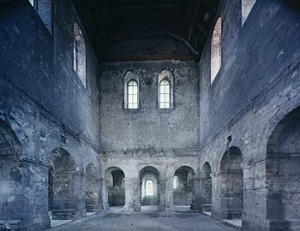On 5 September 2001, an organ in 639 year old church in Halberstadt, Germany started

pumping out silence. A couple of years later, on 5 February 2003, the organ played some notes for the first time. This initial musical rest and corresponding set of coordinated musical notes represent perhaps the most ambitious musical project in the history of humanity. The organ is playing a piece written by the infamous 20th Century American composer John Cage. His work, appropriately entitled As SLow as Possible is a relatively sparse piece for which the composer deliberately left the duration up to the performer, in order to further discourage the feeling that one is ever able to hear the same performance twice. Typically, performances of Cage’s work last anywhere from 20 minutes to an hour and a half; this Halberstadt performance is anticipated to last 639 years. Tomorrow, if the piece is well-played, weights will be shifted on the piano’s keys so that a new chord configuration will begin sounding.
Some of my friends accuse John Cage of being gimicky as it is; I suspect many would only amplify that criticism for this performance put on by this small German parish, but I think that there are real and meaningful considerations to take into account. Perhaps the most relevant of these, in my mind, was the consequences of the performers’ attempts to take

John Cage literally, in asking themselves “How long is ‘as long as possible?’ “. Perhaps it is because I dwell in The U.S.A. where the age of most of our construction is measured in decades (if not years), but it seems to me something of a miracle that the building in which the performance is taking place has survived 639 years–let alone that the continuation of the performance practically depends upon its surviving twice that long, to 1,278 years!
While the Halberstadt church performance may have attempted to take into account the raw lifespan of materials in the organ and perhaps the building construction, the real wildcards in the vicissitudes of time that threaten this performance’s completion must surely be so-called acts-of-God and the violence of human action and conflict. That this church has survived not only longer than Germany–with all of its history of destructive war and conflict–but predates even the Prussian state by nearly 200 years is astounding. Calling for an uninterrupted performance of this sort is not just expressing faith not only in time; it is a laudable statement of hopeful fate about the stability of the future of humanity.
For more information about this fascinating performance, visit the ASLSP/Halberstadt website. NPR also had a nice write-up on this performance a half decade ago. Also, if my one-day warning was not enough for you to get your celebration on, the next note-change is scheduled for a little over a year from now, on 5 July 2010.